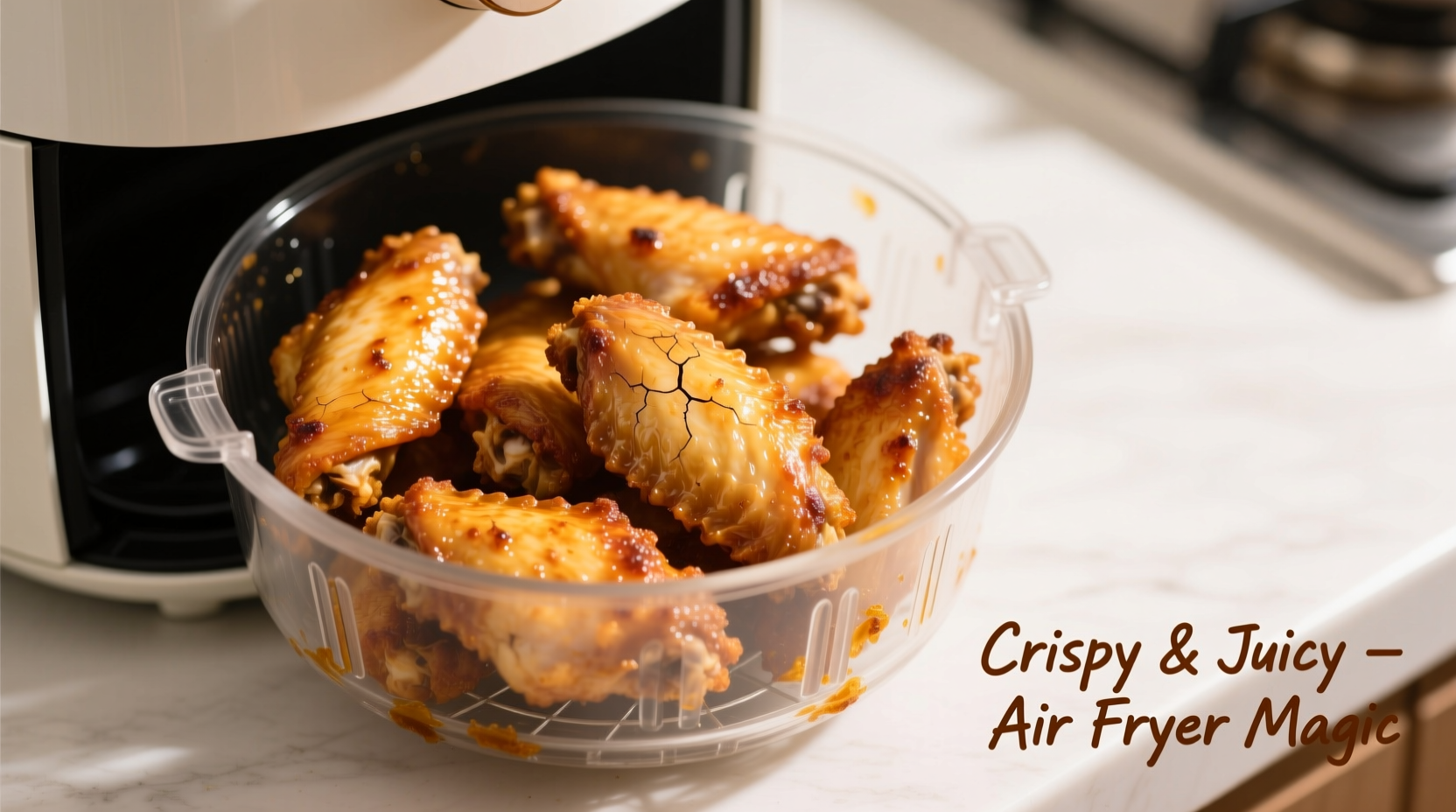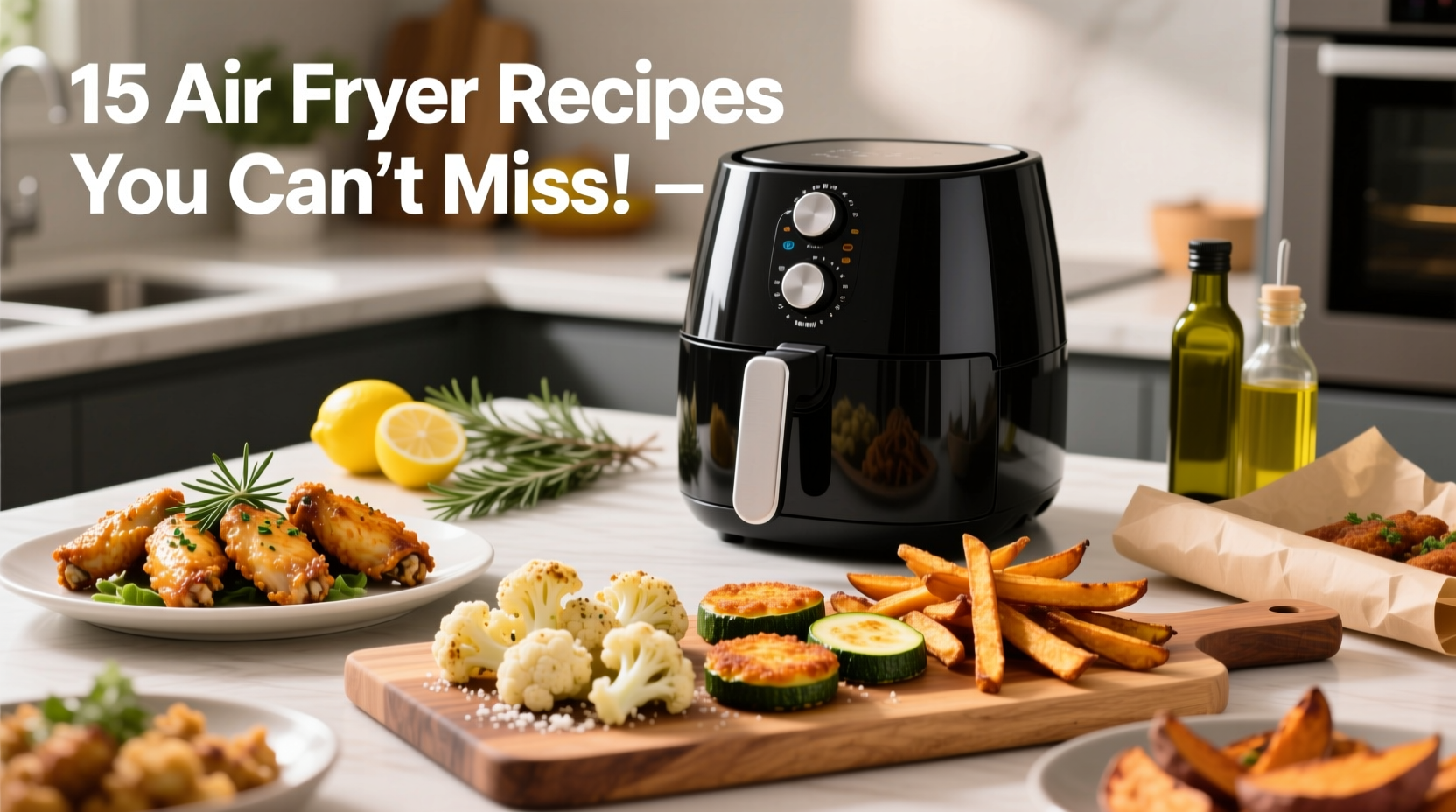Unlock your air fryer's full potential with these science-backed cooking guidelines. Air fryers use rapid convection technology to circulate hot air at high speeds, creating crispy exteriors with minimal oil. Unlike traditional ovens that take 15-20 minutes to preheat, air fryers reach optimal temperature in under 5 minutes, making them ideal for quick weeknight meals. The Maillard reaction - that magical browning process - occurs more efficiently in air fryers due to concentrated heat circulation, delivering restaurant-quality results at home.
The Air Fryer Advantage: How It Works Differently
Air fryers aren't actually frying - they're supercharged convection ovens that cook food using 70-80% less oil than traditional deep frying. The key is the powerful fan system that circulates 350-400°F air at high velocity, creating a vortex that cooks food evenly from all sides. This rapid air movement evaporates surface moisture quickly, allowing food to crisp without steaming. According to USDA cooking guidelines, air fryers reach safe internal temperatures for proteins 20% faster than conventional ovens, reducing overcooking risks.
Top 5 Food Categories That Excel in Air Fryers
Proteins: Crispy Results Without the Oil
Chicken wings transform in just 22 minutes at 400°F, achieving golden crispiness with only 1 tablespoon of oil instead of cups required for deep frying. Bone-in chicken thighs need 25 minutes at 380°F for juicy perfection. For fish fillets, a 12-minute cook at 375°F preserves moisture while creating a delicate crust. The American Council for Fitness notes air-fried proteins contain up to 70% less fat than traditionally fried versions while maintaining satisfying texture.
Vegetables: Fast, Flavorful, and Nutrient-Preserving
Broccoli florets develop restaurant-quality char in just 10-12 minutes at 390°F, preserving 25% more vitamin C than boiling according to Journal of Food Science research. Sweet potato wedges achieve perfect caramelization in 15 minutes at 400°F. The key is cutting vegetables uniformly and using just enough oil to coat - typically 1-2 teaspoons per pound.
| Food Item | Temperature | Time | Special Instructions |
|---|---|---|---|
| Chicken Wings | 400°F | 20-22 min | Toss halfway; pat dry first |
| Sweet Potato Fries | 400°F | 14-16 min | Soak in water first; single layer |
| Salmon Fillet | 375°F | 10-12 min | Skin-side down; light oil |
| Broccoli | 390°F | 10-12 min | Toss with 1 tsp oil |
| Frozen Spring Rolls | 380°F | 8-10 min | No thawing needed |
Frozen Foods: The Ultimate Reheating Tool
Air fryers revive frozen foods better than microwaves or ovens. Frozen spring rolls achieve perfect crispness in 8-10 minutes at 380°F without sogginess. Tater tots develop golden exteriors in 12-14 minutes at 400°F. Unlike microwaves that create steam pockets, air fryers maintain structural integrity while heating evenly. The University of California's Food Science Department found air-fried frozen foods retained 30% more texture integrity compared to microwave reheating.

Baked Goods: Surprising Successes
While not ideal for large cakes, air fryers excel at small-batch baking. Cinnamon rolls bake in 12-15 minutes at 320°F with perfectly gooey centers. Cookie dough portions create bakery-style cookies in 8-10 minutes. The concentrated heat creates a unique texture profile - crisp edges with soft centers. For best results, reduce standard oven temperatures by 25°F and check for doneness 25% earlier than recipe instructions.
Leftovers: Better Than Original
Pizza regains its crisp crust in just 3-4 minutes at 350°F, avoiding the sogginess of microwave reheating. Fried chicken recovers its crunch in 5-6 minutes at 375°F. The key is placing food directly on the rack rather than in the basket for maximum air circulation. Leftover french fries achieve near-original crispness in 4-5 minutes at 380°F with a light oil mist.
Foods That Don't Work Well (and Why)
Air fryers have limitations you should understand. Wet batters create messy splatters rather than proper coating. Large roasts over 2 pounds cook unevenly due to limited capacity. Liquid-heavy dishes like stews evaporate too quickly. Delicate foods like egg dishes require careful temperature control. The appliance's small size creates natural constraints - attempting to cook for more than 4 people typically requires batch cooking.
Pro Tips for Perfect Air Fryer Results
- Preheat always - 3-5 minutes ensures consistent results
- Don't overcrowd - leave space for air circulation (max 2/3 full)
- Shake or flip - midway through cooking for even browning
- Oil wisely - use spray oil for even, minimal coating
- Use parchment liners - with holes for easy cleanup without blocking airflow
Troubleshooting Common Air Fryer Issues
Food not crispy enough? Increase temperature by 25°F or extend cooking time by 2-3 minutes. Pat proteins dry before cooking. Uneven cooking? Rotate the basket halfway through. For larger items, flip or reposition food. Smoke issues? Reduce oil quantity, clean the basket thoroughly, or lower temperature slightly. Excess smoke often indicates food residue burning in the heating element area.
Maximizing Your Air Fryer's Potential
Air fryers shine for quick meals but require technique adjustments from traditional cooking. Start with smaller portions to understand your model's quirks. Invest in accessories like skewer racks for kebabs or baking pans for desserts. Remember that cooking times vary by model - digital air fryers often cook faster than analog versions. With practice, you'll develop intuition for when to check foods, creating consistently perfect results that make this appliance indispensable in your kitchen.
Can I cook frozen meat directly in the air fryer?
Yes, but with adjustments. Small frozen cuts like chicken breasts need 20-25 minutes at 375°F (vs 15-20 for thawed). Increase time by 50% for frozen items and check internal temperature with a thermometer to ensure safety.
How much oil should I use in an air fryer?
Most foods need just 1-2 teaspoons of oil. Use a spray bottle for even distribution - traditional pouring often creates uneven coating. Oil-free cooking works for pre-marinated items but may sacrifice some crispiness.
Why does my air fryer smoke during cooking?
Smoke typically comes from excess oil dripping onto the heating element or food residue buildup. Reduce oil quantity, ensure the basket is clean, and avoid cooking very fatty foods without proper drip management. Regular cleaning prevents accumulated grease from burning.
Can I open the air fryer while cooking?
Yes, opening briefly to check or shake food won't significantly impact cooking time. Modern air fryers maintain temperature well during short openings. Just avoid frequent or prolonged openings which can extend cooking time by 5-10 minutes.
What's the maximum quantity I should cook at once?
Never fill beyond 2/3 capacity. For crispy results, leave space between items for air circulation. Large batches require 25-30% more cooking time and often need mid-cooking rotation. Cooking in batches yields better results than overcrowding.











 浙公网安备
33010002000092号
浙公网安备
33010002000092号 浙B2-20120091-4
浙B2-20120091-4